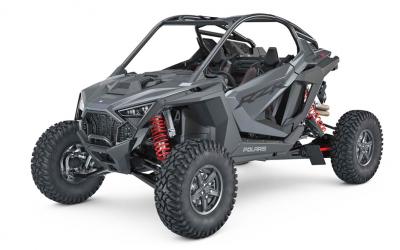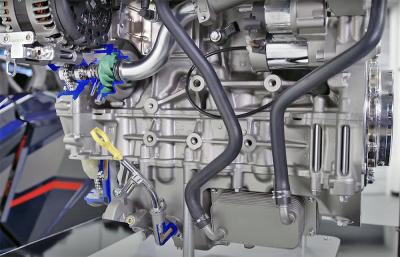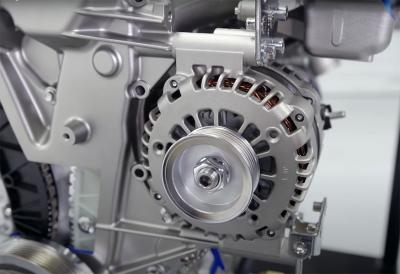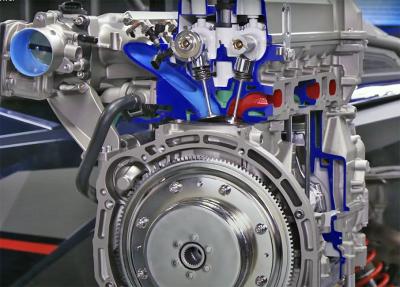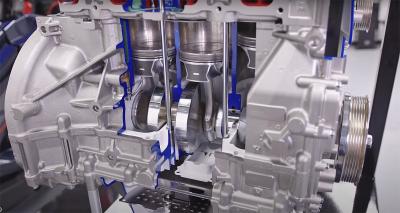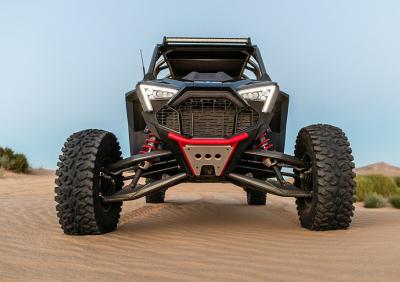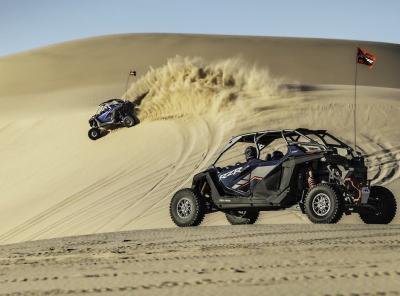Performance enthusiasts have long known the old saying “There’s no replacement for displacement”. There are many models in the ATV and Side x Side world offering thrills built on engine size, but until recently no manufacturer had crossed the 1000cc barrier. The reason was, off-road engines originally designed with less than 1000cc’s of displacement were regulated differently than engines beyond 1000cc’s. To develop and certify an engine to be fully emissions compliant solely for off-road use is enormously expensive and cost prohibitive. But what if there could me multiple uses for a new power plant to help spread development costs? True to their penchant for finding multiple uses for every part they’ve ever developed, Polaris once again has found a way to efficiently spread development costs over several models.
ONE ENGINE – SEVERAL MODELS
Large displacement, multi-cylinder engines are nothing new for Polaris. Whether on snow, dirt, or asphalt, for decades they’ve had powerful engines pushing their top-of-the line vehicles. The three-wheeled Slingshot was powered by a 2.4 L GM engine, but last year that was swapped out for a new ProStar based 2.0 L engine developed in-house by Polaris. After a year in the Slingshot, that engine became the base for the new 2.0L RZR Pro-R of today, and although there are many similarities, the two are not identical. The reason is, on-road engines tend to operate at much lower, constant RPMs, and in cleaner, consistent conditions, while off-road engines must run in widely varying RPM range and conditions. Off-road engines face much greater demands, and they may be idling up a rock face, slogging through a Louisiana mud pit, or blasting wide open across the desert. Highlights of the new Polaris ProStar Fury 2L RZR engine are:
- LARGEST ENGINE EVER INTRODUCED IN A PRODUCTION OFF-ROAD VEHICLE. The 2.0 L engine is twice the size of anything else
- OPTIMIZED FOR OFF-ROAD USE. Significant updates were made from the 2.0L Slingshot engine as required for widely varying off-road requirements.
- 225 HP, DOHC Inline Four-Cylinder, 4-Stroke
- 152.8 Pound-Feet of TORQUE at 7,500 RPM. 8,500 REDLINE
- MULTIPLE DRIVE MODES – The new engine control system offers 3 modes of power delivery, Rock, Sport, and Race
- EASY ACCESS FOR MAINTENANCE. The oil filter and dip stick are easily reached
- POWER FOR ACCESSORIES – An automotive style alternator delivers consistent, ample power for accessories
- NEW CVT TRANSMISSION with HEAVY DUTY CLUTCHES and CVT BELT
SO HOW DID THEY GET AROUND EMISSIONS?
Certifying an engine for production is a matter of building multiple examples, and then submitting test data to Government emissions bureaus for testing and approval. That’s the simple answer, but the reality is, stepping from the lower category of less than 1000cc’s to the more stringent 1000cc + range requires additional engine management software and sensors, and is exponentially more expensive both in development and production. However, since Polaris had already certified their 2.0L engine to meet emissions in their SlingShot, they had already done much of the groundwork. Polaris didn’t exactly “get around” emissions with the new RZR, but instead found a way to spread development costs over several models.
WILL OTHER OEMS FOLLOW?
The other OEMS have surely taken note of the direction and methods Polaris used to bring the new RZR Pro R models to the market. The question becomes, will they follow with a new high-performance model of their own? Of all the OEMs, Honda has the most experience, and the resources that would allow them to drop anything from the ordinary Accord to their 1.6L F1 engines into a Talon chassis. After all, it already has the dual-clutch F1 transmission, it might as well get the power plant too! Yamaha, Kawasaki, and BRP all benefit from having fully certified and incredibly powerful engines in their motorcycle or marine division, and those too might hold possibility for additional development. Who wouldn’t want a 300 hp Jet Ski powerplant in a Teryx KRX? What it will come down to is how well the new Polaris is received, any additional problems the more powerful platform may inadvertently cause, and the return on investment.
Indeed, that risk / benefit calculation is not lost on Polaris, and the initial build of the new models is limited to only 500 units. It’s no secret Polaris has had more than its share of recalls in recent years, and by limiting the initial build they can command both a premium price, and limit potential exposure for any unforeseen problems. One thing for sure, anybody laying out $50K for an off-road toy is NOT going to be particularly sympathetic if their new vehicle spends more time at the dealer service department for recalls than it does on the trails. Let’s hope they got all the bugs worked out in testing first! Fortune favors the bold, and today the boldest move in the off-road world has been made by Polaris. As usual.


